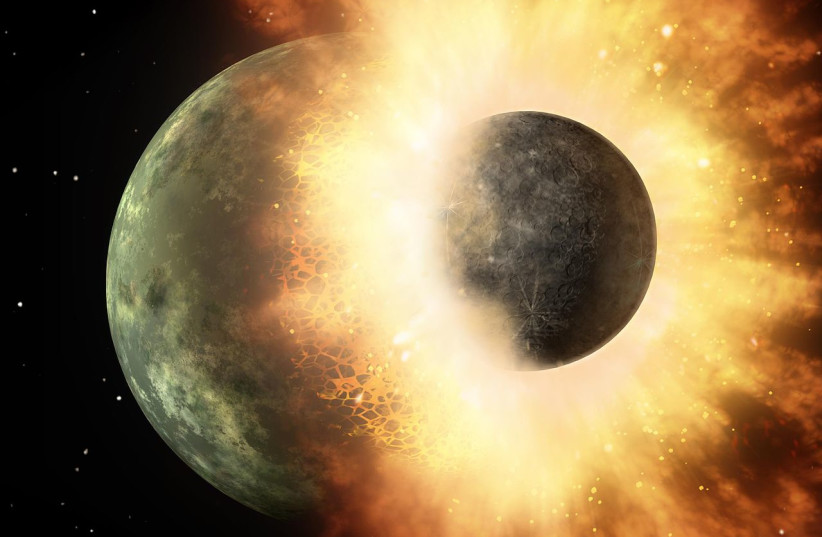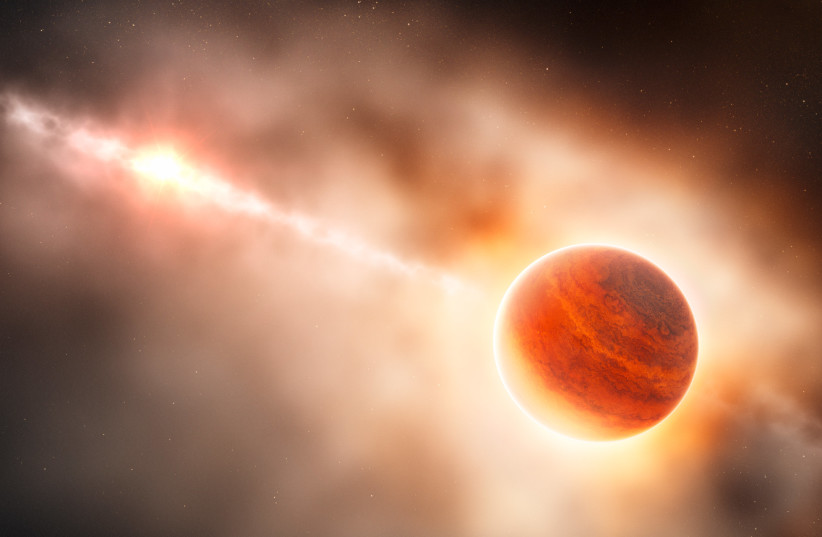Earth, Venus, Mercury and Mars were likely formed by material originating in the inner solar system, with just a small fraction of their original material having originated past Jupiter, a new scientific study found.
Scientists noted two very different ways that rocky planets are formed. One supposes that planetary embryos in the inner solar system, the building blocks of minerals that make up planets, collide together to form planets. This is an older theory that suggests the dust and gas that orbited the Sun in the early days of the solar system eventually formed together into these planetary embryos, some of which were the size of the Moon.
The other, newer theory suggests that planets form by gathering millimeter-sized "pebbles" from the outer solar system drifting towards the Sun through a process known as accretion, condensing it all together through gravity to form these planetary embryos that would form the planet.
Were the planetary embryos formed by material from the inner solar system or the outer solar system?
And, according to this study, published in the peer-reviewed academic journal Science Advances by researchers from the University of Münster, National History Museum Berlin and the Free University of Berlin in Germany, Observatoire de la Cote d’Azur in France and the California Institute of Technology in the US, the rocky planets of the inner solar system were largely formed in the former method.
This was revealed through isotopic compositions of Earth and Mars compared with the material found on some meteorites that would essentially have been part of asteroids and planetoids that could have been some of these very building blocks.
This comparison revealed that most of the composition of Earth and Mars was from these planetary embryos, and only a small fraction, just a few percentage points, showed signs of accretion of particles from the outer solar system.
That does not mean that the theory of pebble accretion from the outer solar system is inherently wrong. After all, studies have shown that this method is effective at forming the cores found in gas giants.
However, the study does show that for Earth and Mars, and likely for Mercury and Venus as well, the main force in the formation of these rocky worlds was the material from the inner solar system.
The scientists were able to determine this by studying Earth's isotropic composition - something that has been studied for quite some time - and Mars' - which was accomplished by studying samples from 17 meteorites that originated from Mars.
These were then compared to the composition of two different types of meteorites: The first, the non-carbonaceous chondrites, originated from the inner solar system and the asteroid belt between Mars and Jupiter; and the second, the carbonaceous chondrites, which originate beyond Jupiter.
Both meteorites contain the materials of the inner and outer solar system that would have been used to form the planetary embryos.
The scientists ran the data through a simulation in order to determine when these materials were incorporated during planetary formation.
The outer layers of rock on the crusts of Earth and Mars had little in common with the carbonaceous chondrites, whose materials match just 4% of the planets' composition.
According to Prof. Thorsten Klein from the University of Münstern, also director of the Max Planck Institute for Solar System Research, “If early Earth and Mars had mainly accreted dust grains from the outer Solar System, this value should be almost ten times higher.”
Why does this matter?
There are several reasons why, but perhaps most relevant is that understanding how planets are formed, brings humanity closer to understanding how the solar system itself functions - and, in turn, understanding how the universe itself works.
Recently, scientists in Japan managed to study the sample brought back by the Japan Aerospace Exploration Agency (JAXA) on their Hayabusa2 mission to the 162173 Ryugu asteroid. This asteroid is thought to have a chemical composition similar to the Sun's photosphere.
This is especially important because it is essentially an early image of the solar system's earliest moments. And, because the Ryugu sample was studied so carefully, without exposing the sample to the Earth's atmosphere and instead of studying it in a sealed environment filled with purified nitrogen or in a vacuum chamber, there is, therefore, no other sample like it, making it an invaluable source of information.
Understanding the formation of the solar system can give us a better understanding of the mechanisms of space and how the solar system evolved - including on the origins of life itself, as these asteroids are thought to have been what brought water and organic material to Earth.


